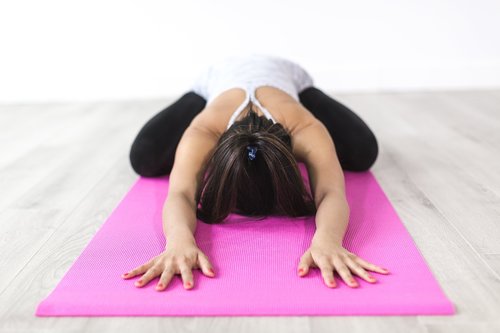Stretching can be a controversial topic and everyone seems to have their own opinion about whether you should stretch before or after exercise, and what type of stretching works best. This can make it confusing to know what is ‘right’. A stretching program, as with most exercise programs, should be specific to each individual, and depends on what type of work you do, what physical activity you do, and what you want to achieve by stretching.
Stretching targets the ‘soft tissues’ of the body including the muscles and tendons. Muscles are made up of lots of small fibres that join together and connect to bone via a tendon. This musculotendinous unit is controlled by nerves and when stimulated acts on joints to create movement. All muscles have an optimal length at which they function best. Unfortunately, there are a number of factors that can result in a muscle becoming shortened. For example:
- Prolonged positions – those long hours spent sitting at work in front of the computer often result in shortened hip flexors and pectoral muscles. This can lead to low back pain and shoulder/neck pain respectively.
- Sport – each sport can cause certain muscles to tighten up, such as those nasty hip flexors in cyclists. Also, if training sessions are not varied, muscles can get tight due to overuse/repetition.
- Tension / stress – the most common area where people ‘carry’ their stress is in the upper shoulders and neck region.
When you stretch out the areas of tightness, you will help to lengthen the fibres of the musculotendinous unit and return it to its optimal length.
As well as lengthening the soft tissue fibres, stretching assists in increasing your ‘stretch tolerance’ (the amount of stretch that your nervous system is happy with). The nervous system has a ‘neutral zone’ within which it allows a muscle to be stretched. Over time this ‘neutral zone’ can become skewed (eg. due to altered posture from sitting at work) and the nervous system gets a reduced tolerance to stretch. By incorporating stretching into your routine, you will help to ‘recalibrate’ the threshold of the nervous system.
How stretching can benefit you:
- Increases range of motion and enables more efficient movement
- Reduces pain
- Improves posture
- Reduces the risk of injury
- Makes you feel good! – physically and mentally
Stretching can be incorporated into your life in a number of ways – with exercises at home, in the pilates studio, with equipment such as spikey balls and foam rollers. Just remember: when stretching it is normal to feel a slight discomfort in the muscle, however do not push through any sensation that is sharp or intense. So have a go at incorporating some delightful lengthening exercises into your weekly routine, and see how much better you feel afterwards! See your Lifecare Physiotherapist or Pilates instructor to see which stretches best suit you and to ensure the correct technique.

